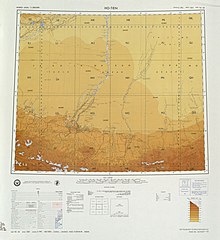Citations:Lo-p'u
Appearance
English citations of Lo-p'u


- 1970 [1964], Reinhard G. Hubel, “The carpets of East Turkestan”, in Katherine Watson, transl., The Book of Carpets[1], West Germany: Praeger Publishers, →LCCN, →OCLC, page 270:
- Chinese sources of the eighteenth and nineteenth centuries refer to carpet production in east Turkestan with centres at Khotan, Yü Tien, Lo-p'u and Pi-shan, with an annual capacity of about 5,000 carpets for export to Andiyan/Kokand (about eighty per cent), British India and Afghanistan (H. Bidder: Teppiche aus Ost-Turkestan). The oases on the southern border of the Tarim basin - less subject to unrest through political events and migrations - were able to lead a relatively undisturbed and independent life and formed a focus round which the development of art and craft could crystallise.
- 1974, Khotan (Encyclopædia Britannica)[2], volume V, →ISBN, page 793:
- The oasis of Khotan, the largest of these, includes Mo-yü (Kara Kash), to the northwest, and Lo-p'u, to the east.
- 1978, Translations on People's Republic of China[3], numbers 418-426, United States Joint Publications Research Service, →OCLC, page 41[4]:
- This year Min-feng County built a hydropower station by utilizing the water of "Water Way 818." Some brigades of Shang-you Commune, Mo-yu County built more than 10 small power plants by converting electric motors into generators. Lo-p'u County expanded its original hydropower capacity by adding on more generating sets; its generating capacity has greatly increased.
